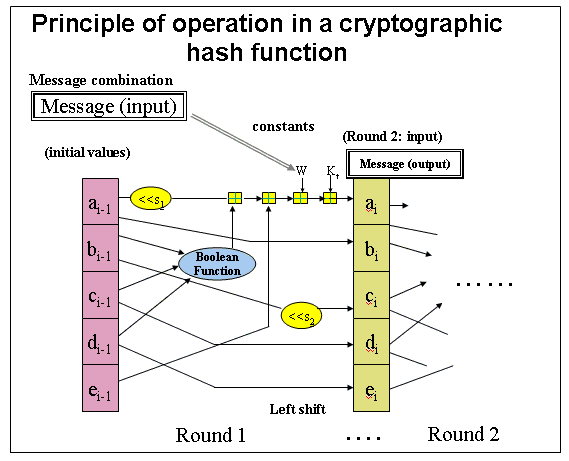ハッシュ関数は任意の長さの入力値に対して, 短い出力値を生成する一方向性関数である. 出力値をハッシュ値, ハッシュコード, ハッシュ結果と呼ぶ.ハッシュ関数の応用としては, 認証, データの完全性の証明, デジタルの署名, ウイルスのチェックなどがある. 最初のハッシュ関数であるMD4は,1990年に Rivest(米国)により発表されて, これまでさまざまなハッシュ関数が提案されてきた. 現在,米国の標準は160 ビットの出力値を持つSHA-1であるが, 拡張されたハッシュ関数であるSHA-256/384/512も発表されている. 一方,ヨーロッパでは,RIPEMD-128/160/256/320が発表された.また, 1992年,Zhengらにより出力値の長さが可変であるHAVALが発表された. 本研究ではハッシュ関数に対する攻撃方法の調査を通じて,それらの安全性を明らかにすることを試みる.

代表的な発表論文
- Yong-Sork HER, Kouichi SAKURAI,
"Design and Analysis of Block Cipher with Variable Word-Size Based on Dedicated Hash Functions: SHACAL-V",
Workshop on Coding, Cryptography & Combinatorics , Aug. 2003.- Yong-Sork HER, Kouichi SAKURAI, and Shin-Hwan KIM,
"Attacks for Finding Collision in Reduced Versions of 3-PASS and 4-PASS HAVAL",
Proc. of 2003 International Conference on Computers, Communications and Systems, Vol.1, pp.75-78, Feb. 2003.- Yong-Sork HER, Kouichi SAKURAI,
"Design and Analysis Cryptographic Hash Function for The Next Generation",
Proc. of International Workshop on Information & Electrical Engineering, Vol.1, pp.168-173, May. 2002.